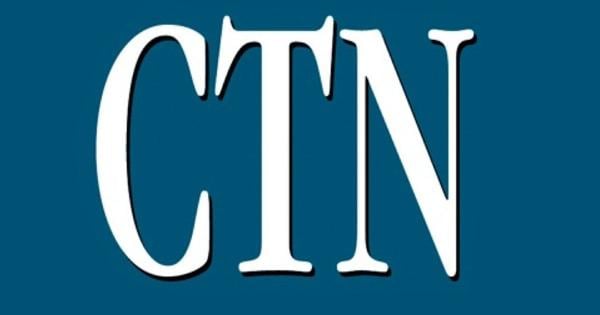
Navigating the Stormy Seas of Free Speech: The Case of Bobby LaPin and the Limits of Online Expression
The recent experience of Bobby LaPin, a Baltimore charter boat owner, highlights the increasingly turbulent waters of free speech in the digital age. His social media post questioning government spending sparked a firestorm, raising concerns about the boundaries of online expression and the potential for chilling effects on legitimate discourse.
The LaPin Incident: A Case Study in Online Censorship
Bobby LaPin’s case serves as a stark reminder of the challenges inherent in navigating the complexities of free speech in the digital realm. His seemingly innocuous social media post questioning the expenditure of taxpayer money on a military parade unexpectedly unleashed a torrent of negative reactions, showcasing the volatile nature of online discourse and the potential for even mild dissent to be met with swift and intense backlash. The incident highlights the fragility of free speech in the face of organized online campaigns and the potential for individual voices to be silenced.
The intensity of the reaction against LaPin’s post raises concerns about the potential for online censorship and the chilling effect it can have on free expression. Individuals may be less likely to voice dissenting opinions or express critical views if they fear similar consequences. This self-censorship undermines the principles of open dialogue and the free exchange of ideas, which are essential for a healthy democracy. The incident underscores the need for greater awareness of the potential for online censorship and the importance of protecting dissenting voices.
Furthermore, the LaPin incident underscores the need for a nuanced understanding of the First Amendment’s protection of free speech. While the First Amendment guarantees freedom of expression, it is not absolute. There are limitations on speech, such as incitement to violence, defamation, and obscenity. However, the line between protected and unprotected speech can be blurry, and the application of these limitations can be subjective and politically charged. The LaPin case highlights the challenges in defining the boundaries of protected speech in the context of online expression.
The Supreme Court’s Nationwide Injunction Decision and Its Implications
The Supreme Court’s recent decision limiting nationwide injunctions adds another layer of complexity to the already challenging landscape of free speech. This decision impacts the ability of lower courts to issue injunctions that apply nationwide, potentially affecting the enforcement of federal laws and regulations. The implications of this ruling are far-reaching and could have significant consequences for various legal battles, including those involving free speech. The decision’s impact on the ability of courts to protect free speech rights remains to be seen.
The Supreme Court’s decision raises concerns about the potential for overreach by the executive branch and the erosion of checks and balances within the government. The ability of lower courts to issue nationwide injunctions has historically served as an important check on executive power. By limiting this power, the Supreme Court’s decision may make it more difficult to challenge actions by the executive branch that infringe on constitutional rights, including free speech. The decision has significant implications for the balance of power within the government.
Moreover, the Supreme Court’s decision could have unintended consequences for the protection of free speech. By limiting the ability of lower courts to issue nationwide injunctions, the decision may make it more difficult to prevent the widespread suppression of speech. This could have a chilling effect on free expression, particularly for vulnerable groups or those who hold dissenting views. The potential for unintended consequences related to free speech protection is a significant concern.
The Future of Free Speech in a Polarized Climate
The confluence of the LaPin incident and the Supreme Court’s decision on nationwide injunctions underscores the increasingly precarious state of free speech in today’s polarized political climate. The digital age, with its instantaneous communication and echo chambers, has amplified the challenges to free expression. The combination of online harassment campaigns and potential limitations on judicial oversight creates a climate where dissenting voices are increasingly vulnerable to silencing. The need for proactive measures to protect free speech is more urgent than ever.
The ongoing debate over the proper balance between free speech and other societal values, like the prevention of harm, further complicates the matter. The tension between these competing values needs careful consideration and ongoing dialogue. The lack of a clear consensus on these matters fuels the polarization and makes it more challenging to protect free speech rights. Finding a balance that protects free speech while mitigating harm remains a significant challenge.
In conclusion, the case of Bobby LaPin serves as a cautionary tale, highlighting the fragility of free speech in the digital age and the need for vigilance in protecting this fundamental right. The Supreme Court’s decision on nationwide injunctions further complicates the situation, potentially limiting the ability of courts to protect free speech from government overreach. The future of free speech requires careful consideration of these challenges and proactive measures to ensure the protection of this fundamental right in an increasingly polarized society.
Key Takeaways
- Bobby LaPin’s experience illustrates the challenges of free speech in the digital age.
- The intensity of the backlash against LaPin’s post highlights the potential for online censorship.
- The Supreme Court’s decision on nationwide injunctions adds another layer of complexity.
- The confluence of these events underscores the precarious state of free speech in a polarized climate.
- Protecting free speech requires vigilance and careful consideration of competing societal values.





